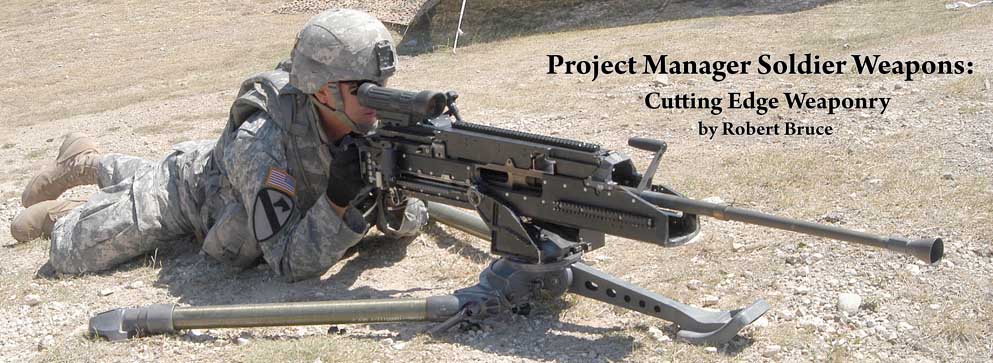28 July 2008, Fort Hood, Texas. John Moses Browning’s 80 year old “Ma Deuce” M2HB machine gun might eventually be able to enjoy retirement when this new .50 caliber XM806 is fielded in the not-too-distant future. Derived from the convertible .50 caliber XM312 – 25mm XM307 Advanced Crew Served Weapon, it’s about half the weight of the M2 and boasts reduced recoil that facilitates mounting optical sights for superior accuracy. This new weapon is of particular interest to U.S. Special Operations Command as well as the Army’s light infantry formations. (PEO Soldier)
“As a matter of course, we put all our developmental weapons through their paces before putting them in the hands of Soldiers. We test using thousands of rounds of ammunition in all kinds of environments. They undergo stress tests, drop tests, and extreme environment tests to include, arctic, jungle, desert and more before they get the green light. These weapons are durable, reliable and effective when we put them in the field. With regards to the punch of the 25mm round, we’re confident in the lethality the XM25 can deliver.” – Colonel Douglas Tamilio, PM Soldier Weapons
By the time you read this, the XM25 Counter Defilade Target Engagement System with its uncannily accurate airburst ammo will undoubtedly have drawn its first blood in Afghanistan.
This sci-fi looking individual armament, initially the “grenade gun” upper half of the ill-fated Objective Individual Combat Weapon, has been in combat operational test mode for several months now with selected elements of US Special Operations Command.
It’s the hottest new man portable grenade launcher anywhere, boasting indirect fire capabilities with “smart” ammo that can kill enemies smugly squatting behind walls and boulders, until now unreachable by squad level weapons.
At their recent press briefing and live fire event at historic Aberdeen Proving Ground, Maryland, top officials of PM Soldier Weapons told Small Arms Review and reporters for other military and defense industry publications how the XM25’s unique capabilities would have been of particular value to defenders in the now-famous “Keating” firefight.
Among many lessons learned in the near-annihilation of this small, fortified camp in what’s formally known as the Battle of Kamdesh, Afghanistan, they said, is the need for unit level indirect fire capability that is highly flexible and immediately available.
Combat Outpost Keating
More than 300 Taliban fighters launched a surprise attack on Keating in the predawn darkness of October 3, 2009, saturating the small base with mortar rounds, RPGs and heavy small arms fire.
They quickly breached the perimeter, routed the panicked Afghan Army detachment and nearly overran the American soldiers of Bravo Troop, 3rd Squadron, 61st Cavalry Regiment.
Bad weather and slow response from artillery and air support assets combined to give the enemy special advantages in their initial assault from the high ground “bowl” around the camp, leaving the defenders below with little more than basic individual and crew-served weapons to fight back with.
Their direct fire arms and single shot M203 grenade launchers were of limited value against battle-seasoned attackers who skillfully used abundant cover from boulders and depressions in the surrounding rough terrain and defensive positions inside the wire.
Relief came slowly but soon built to a decisive level as artillery, helicopter gunships, jet fighters and bombers combined to rout the enemy.
When the smoke cleared an estimated 150 Taliban were dead at the cost of 30 U.S. troopers killed or wounded.
Cost/Benefit Ratio
Richard Audette, Deputy PMSW, responding during the press conference at Aberdeen, to implied criticism in a reporter’s question noting the projected $25,000 cost per XM25, called it a bargain compared to far more expensive weaponry wielded by external support elements like those that turned the tide at Keating.
“They were hitting the attackers with Apache gunships, Hellfire missiles and Excaliber artillery rounds,” he said, “far more costly, cumbersome, and slow to arrive.”
“The XM25,” he emphasized, “is an immediately available, squad level weapon that pays for itself, but more importantly it saves solders’ lives because it can take out those defilade (behind cover) targets.”
Lieutenant Colonel Christopher Lehner, Product Manager Individual Weapons, underscored the XM25’s remarkably fast target engagement capability against fleetingly-glimpsed targets.
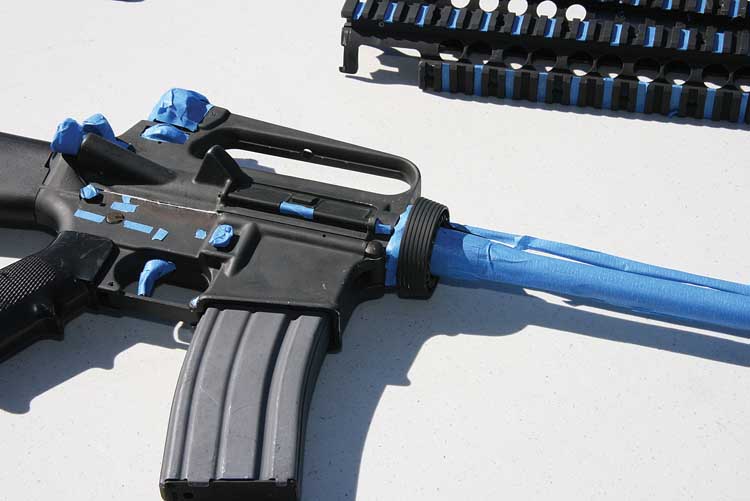
“In under five seconds I can lase for range, get my adjusted reticle on target and pull the trigger,” he said. “At four hundred meters it takes another two seconds to get there and explode. Seven hundred meters another second or so. It really doesn’t give the Taliban a lot of time to reposition himself.”
Then, adding his perspective on the XM25’s $25,000 price tag, Lehner invited a comparison to the total cost of the current, less capable combination of weapon and accessories.
“Add up the cost of an M4 carbine with M203 grenade launcher, STORM laser rangefinder, plus night vision and aiming modules,” he said, noting that the XM25 fully integrates these components with the added benefit of a ballistic computer and airbursting ammunition.
SAR has been closely following the sixteen year saga of this 100 million dollar engineering marvel and we are pleased to know that it has finally made its way into the hands of the snake-eating fraternity. If all goes well, we’re told, it will be available in limited quantities for muddy-boots grunts in the 2013-14 time frame.
Lehner explained that the plan for fielding this exotic grenade launcher was under development but not to expect it to become a standard squad weapon.
“It’s potentially an arms room weapon,” he said, “like a shotgun or other specialized weapon that you’d draw for certain missions where you need the (XM25’s) unique capability.”
While the wizardry embodied in the XM25 is spectacular, there are several other developments from the dedicated team at Program Manager Soldier Weapons that also deserve special recognition.
Mulberry Point Range
PM Soldier Weapons had wisely set aside several consecutive days for hands-on demos for congressional and military VIPs, efficiently utilizing the considerable time and expense required for such things. These focused opportunities gave a wide variety of purse-keepers and decision-makers the chance to see for themselves what was in the weapons development pipeline.
Press day was a continuation of the process, with PMSW hoping that knowledgeable reporters would convey to the public how America’s defenders were armed. More than a dozen reps turned up, from outlets ranging in credibility and seriousness from USA Today to Army Times, with Small Arms Review in there on the right side of the scale.
After the obligatory meet, greet and ground rules briefing, Aberdeen Test Center’s Mulberry Point Small Arms Range went hot with a HE (high explosive) demo shot from the XM25. Safety concerns kept us inside the ballistic glass windowed observation building.
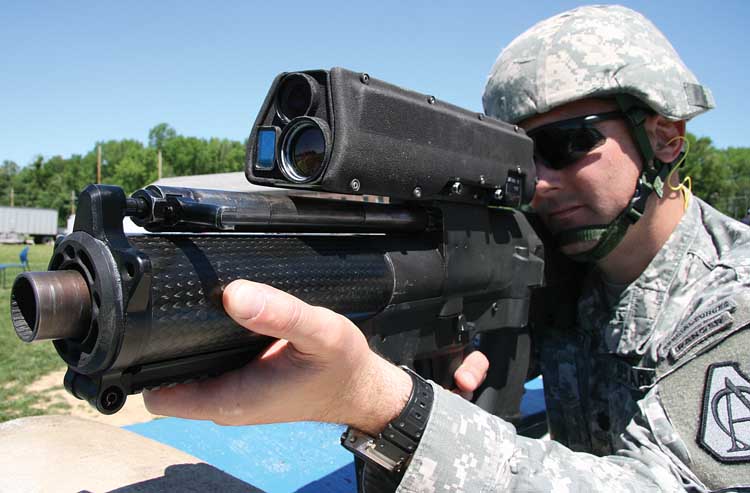
We could see the gunner just outside the thick glass window and his actions were explained in real time by Lieutenant Colonel Lehner. Using the weapon’s highly sophisticated fire control system with on-board laser rangefinder, he said, the shooter gets exact distance to the front wall of a simulated building with an open window.
With the simple push of a button he adds a meter to the range and the chambered “smart” round is electronically programmed with the precise distance from launch to detonation point. In this case right through the window and inside the room.
The fire control’s ballistic computer calculates angle of elevation based on range and displays a red dot in the electro-optical sight with the correct aiming point. Windage can be programmed as well.
When the round was fired, a computer chip in the 40mm HE warhead counted revolutions in flight and initiated detonation at approximately the center of the “room,” showering it with lethal fragments. A remote video camera linked to a large screen in the observation building provided dramatic evidence of the effectiveness of this programmable airburst weapon’s precision lethality.
Then, we were herded outside to observe a series of live fire demonstrations of selected current weaponry, starting with the lock-busting 12 gauge M26 Modular Accessory Shotgun System and moving down the firing line to see grenade launchers, machine guns, sniper rifles and the new “dazzling” laser on a hulking armored vehicle.
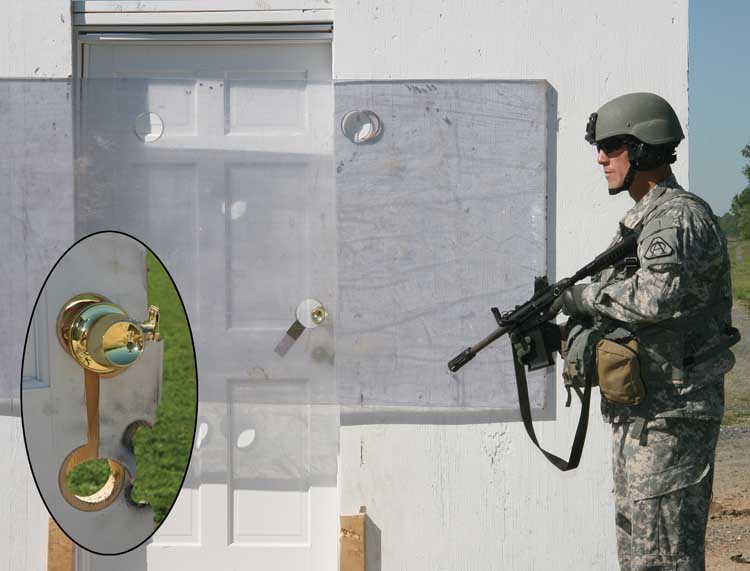
M240 Light
While highly reliable and very accurate, a standard 7.62mm M240B medium machine gun weighs a hefty 27 pounds, making it a burden for dismounted troops on the move.
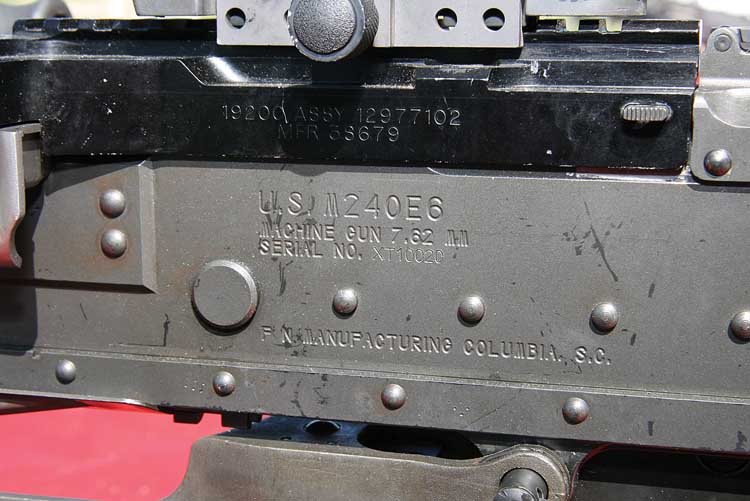
PM Crew Served Weapons has responded with the M240L (Light), incorporating a titanium receiver and other refinements to drop 5.7 pounds without sacrificing combat performance.
Further weight reduction is realized when pairing it with the new M192 Lightweight Ground Mount tripod, boasting better stability and an improved traversing and elevating mechanism at a weight saving of six pounds.
Old Warhorse Returns
Soldiers and Marines of a certain age (including a few of us at SADJ) should take special pleasure in seeing the honored return of the post-WW2 generation’s venerable M14 rifles.
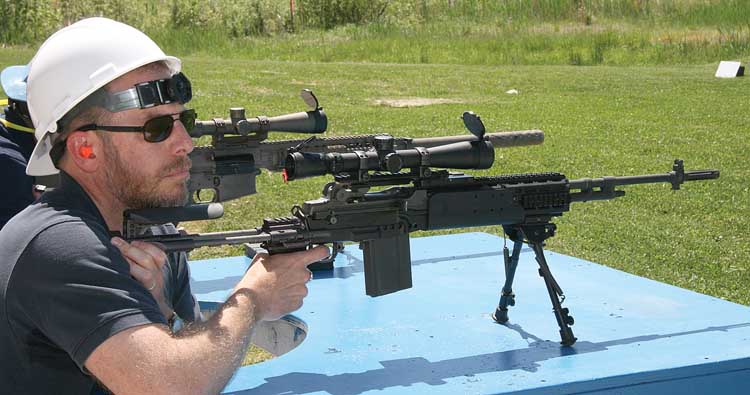
This hard-hitting, long reaching 7.62x51mm NATO caliber battle rifle was pushed aside by the pipsqueak 5.56mm M16 in the Vietnam War when it was deemed that an “assault rifle,” characterized by light weight and high volume of fire, was better for jungle fighting.
But now that the battlefields are in Iraq and Afghanistan – mostly treeless, arid plains and mountains – the M16 and its little brother M4 are noticeably lacking in necessary range (maximum approximately 500 meters) and knockdown power.
Spurred by urgent Operational Need Statements from combat units, the Army started pulling mothballed M14s out of storage, adding day scopes, and rushing them off to CENTCOM’s AO for use by “Squad Designated Marksmen.”
This eminently practical solution has since been kicked up a notch at PM Soldier Weapons by creation of the Enhanced Battle Rifle, a classic M14 retro-fitted at the Army’s Rock Island Arsenal with a modern chassis stock and capable of mounting a full range of day and night sights. More than 5,000 have been fielded so far and 1,700 more are in the pipeline.
LTC Lehner says that the EBR’s dramatically increased effective range, as much as 800 meters in capable hands, has forced the Taliban to “change its tactics,” backing way off when initiating an attack.
More Sniper Stuff
The 7.62mm M110 Semi-Automatic Sniper System (SASS) from Knight’s Armament – apparently just about everything it needs to be already – will be outfitted with a collapsible buttstock, deemed better for close quarter engagements.
The awesomely powerful .50 caliber Barrett M107 Semi-Automatic Long Range Sniper Rifle is going to lose a little weight, get a specially designed suppressor and a new protective exterior coating.
Optics enhancements are in the works, starting with dumping complicated Mil-Dot reticles in favor of with a modern stadia type offering rapid estimation by fitting targets within graduated ranging overlays.
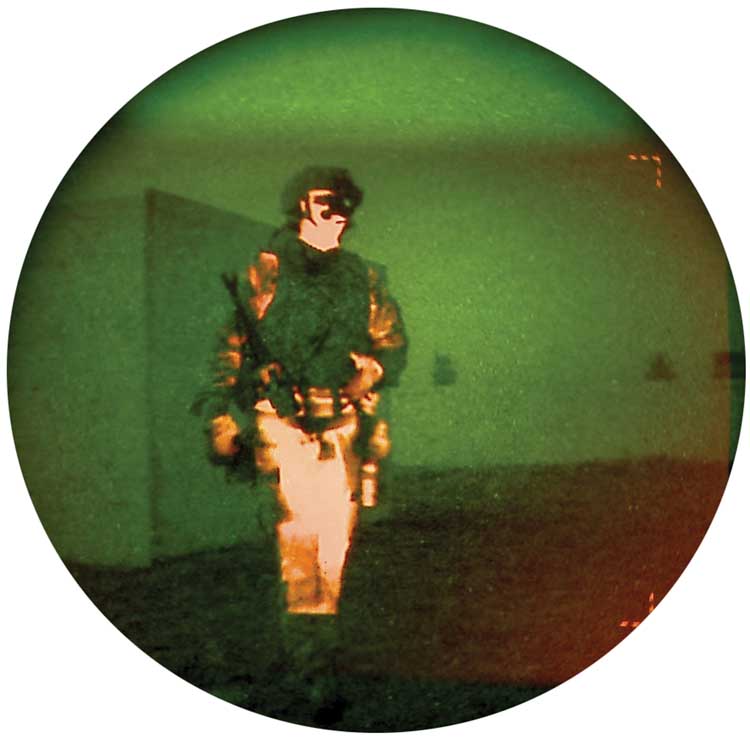
New sniper scopes are on the way, incorporating sophisticated laser rangefinders with electronic DOPE (Data On Previous Engagement) databases.
Two whiz-bang fire control systems are being conjured up by techno-spooks at DARPA (Defense Advanced Research Projects Agency), pushing cutting-edge technologies to increase operational range and hit probability for sniper-spotter teams:
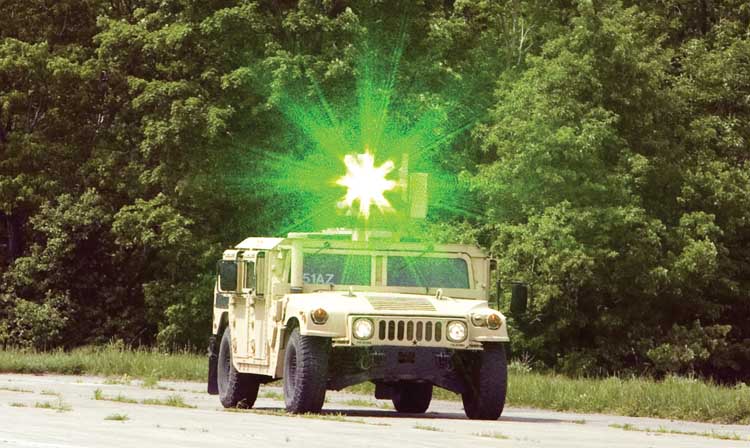
* “One Shot” program seeks a technically advanced spotting scope capable of calculating cumulative wind effects to target and providing a near-instantaneous, accurate, adjusted ballistic aimpoint to the shooter.
* The EXACTO program takes One Shot to the “smart munitions” level; maybe like a laser guided bomb for snipers. It’s said to be a spotting scope-based target acquisition and guidance system that steers maneuverable .50 caliber projectiles directly to a target.
While SAR doesn’t shy away from wondering if EXACTO will be a ballistic breakthrough or an expensive, dead-end boondoggle, PEO Soldier documentation predicts maturity of these technologies and transition to the field over the next four years.
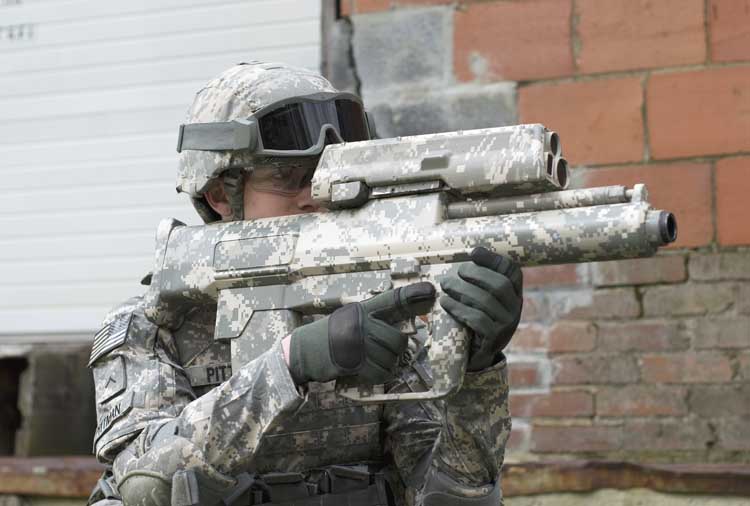
XM2010
Long range precision shooters should take particular note of an exciting development unveiled by PMSW just before this article was completed.
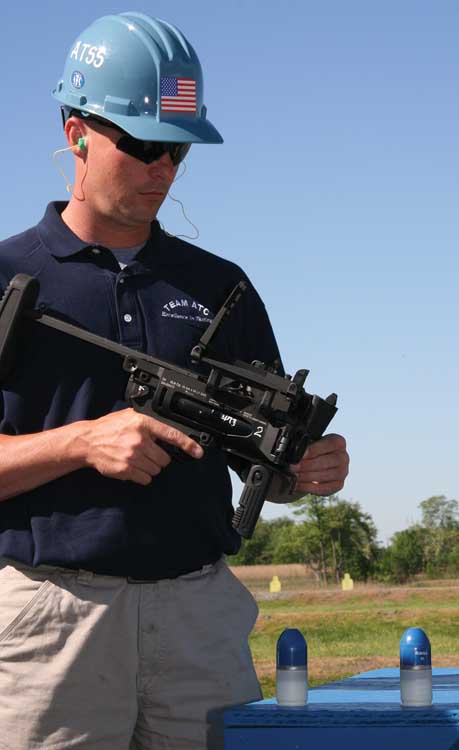
It’s a significant upgrade to the tried and true M24 Sniper Weapon System, that classic Remington 700 bolt action rifle, optimized for .308 cal. Winchester M118 Special Ball ammo.
The new “M24 Reconfigured Sniper Weapon System” carries the designation XM2010, now chambered for hot .300 Winchester Magnum rounds and wrapped in a modernistic skeletonized chassis.
- 5-round box magazine to make the system easier to load and reload with the additional option to change out ammunition quickly
- Rail endowed chassis and free floating barrel that allow for easier mounting of weapon accessories and greater accuracy
- Folding and adjustable stock that includes comb and length-of-pull adjustments
- Leupold Mark 4 6.5-20×50mm Extended Range/Tactical riflescope with advanced scalable ranging and targeting reticle; fielded with the AN/PVS-29 Clip-on Sniper Night Sight
- Quick attach/detach Advanced Armament Corp. suppressor to reduce audible and visible signature with an available thermal sleeve that reduces mirage effect on heated suppressors
The upgrade is said to have received high marks from skilled shooters involved in testing and evaluation.

“The XM2010 had pinpoint precision,” said SFC Robert Roof, NCOIC/Chief Instructor, United States Army Sniper School. “We were able to achieve shots well within the weapon’s capabilities both during limited visibility and during the day. The optics were clear and easy to use and the ergonomics of the weapon made it very comfortable to shoot.”
Remington won the contract following competitive trials and is well positioned to supply as many as 3,600 of these upgraded M24s with the first to be fielded in 2011.
Better M4 and a Brand-New Carbine?
While bravely defending against decades of criticism over reliability and durability of the 1.1 million M16/M4 weapon systems currently fielded, PMSW acknowledges the desirability of even more “product improvements.”
PEO Soldier is currently pursuing a “dual path” strategy; continuously improving the half million M4 Carbines in the field while simultaneously conducting a search for a replacement.
M4 Gets More
The first path is the three phase improvement plan for the M4, adding to more than 60 refinements since its introduction:
- The Army will purchase 25,000 improved M4A1 Carbines with a heavier barrel for greater sustained rate of fire and fully automatic function in an ambidextrous fire control assembly (FCA). A solicitation will be issued for kits to convert up to 65,000 in-service M4s to A1 configuration.
- Incorporate improvements in forward rail assemblies to increase accessory integration and more durable bolts and bolt carrier assemblies.
- Evaluate commercially available operating systems against the performance of the M4’s current gas impingement system. It might even be an off-the-shelf piston kit.
Carbine Competition
At the same time that M4A1 upgrades are underway, Secretary of the Army has ordered a “full and open competition” for a possible replacement.
There’s a new requirements document and money is in hand to search for a new carbine that can outperform the current M16 and M4 series weapon systems.
It’s supposed to have improved features such as fully ambidextrous controls, semi- and full-automatic fire, and accurate and reliable firepower. In addition, integrated rails will accept accessories that currently attach to Mil-Std 1913 rails.
The new carbine will be capable of firing the family of U.S. Standard Type Classified rounds or nonstandard ammunition “with the same capabilities as the current 5.56mm family of ammunition.” We hope that’s actually supposed to read “better” capabilities.
Bye-bye Beretta?
Although combat use of handguns by conventional forces is said to be “statistically insignificant,” the intensely personal preferences of those who pack standard issue pistols is not kind to those designs handicapped by 9mm FMJ ammo, decidedly lacking in lethality.
And in the U.S. Army since 1989, that’s the Beretta M9, an eminently serviceable semiautomatic that has been unfairly maligned as unreliable due to stingy bureaucrats buying crappy magazines.
Credit Air Force Security for getting the latest handgun battle moving with the necessary validation from the Joint Requirements Oversight Council.
But it’s the Army taking the lead with what’s called the Modular Handgun System (MHS); a “non-caliber specific weapon” finished in a non-reflective neutral color with modular features to allow for adapting different fire control options, aiming aids on Mil-Std 1913 rails, alternate magazine choices, take a sound and flash suppressor and will fit various hand sizes.
Plenty of commercial firms have been working on all this for many, many years so there should be no lack of contenders. The timeline calls for trials and selection in FY11-12, completion of testing in FY13 and Type Classification expected in FY14.

Crew Served Weapons Future Initiatives
The American GI is a clever fellow and his natural admiration for the capabilities of vehicle mounted CROWS has led to urgent requests for a way to put these remote control rigs on top of guard towers.
The idea is to increase effectiveness by enabling them to conduct surveillance and engage threats from inside. That’s right – from up in the CROWS nest.
Armament, Research Development & Engineering Center (ARDEC) engineers are on it, working to retrofit an earlier CROWS variant into The Protector Lite Static Platform System.
Video and thermal surveillance cameras allow threat detection in all light and weather conditions and assist in accurate aiming of on-board M240B or M249 machine guns from elevated positions out to a range of 500-1,000 meters.
Ma Deuce on a Diet
The 90 year old “Ma Deuce” M2HB machine gun is getting a bit of modernization in the form of a Quick Change Barrel kit that speeds the process of swapping overheated barrels and eliminates the need for setting headspace and timing. And she’s getting a serious new rival.

The XM806 Lightweight .50 Caliber Machine Gun is intended to deliver heavy machine gun punch at about half the weight of the M2HB, making it particularly attractive to special operations, as well as airborne, airmobile, mountain, and light infantry forces.

Other important advantages claimed for the gun include 60 percent reduced recoil, improved reliability, manual safety, and a quick-change barrel with no adjustment needed for headspace and timing.
Development has reached the point where initial fielding is projected for sometime in 2011.
Grunt Gear and Guns from the “Big Green Machine”
Program Executive Office (PEO) Soldier was created by the Army (informally known as the “Big Green Machine” by soldiers and others) with one primary purpose: To develop the best equipment and field it as quickly as possible so that our Soldiers remain second to none in missions that span the full spectrum of military operations.
As recent operations in Iraq and Afghanistan have vividly demonstrated, getting the right equipment to our military men and women is absolutely critical.
By viewing the Soldier as part of an integrated system, PEO Soldier ensures that the Soldier and everything he or she wears or carries works together as an integrated system.
The result is an overall systematic design that benefits Soldiers by enhancing their ability to accomplish individual and collective tasks, improving quality of life, building confidence, and saving lives.
By employing innovative concepts and technologies, PEO Soldier has made great strides in quickly getting improved equipment into the hands of Soldiers when and where they need it.
Headquartered at Fort Belvoir, Virginia, PEO Soldier designs, develops, procures, fields, and sustains virtually everything the Soldier wears or carries.
Projects and Products
This big and complex mission is somewhat simplified through the contributions of four distinct Project Managers under overall command of PEO Soldier. All of these PMs have specialized Product Managers, responsible for nearly 500 items ranging from the Advanced Bomb Suit to the XM806 Lightweight .50 cal. Machine Gun.
Project Manager Soldier Protection and Individual Equipment
PM SPIE develops and fields advanced Soldier protection products, comfortable uniforms to enhance mission effectiveness, and improved parachute systems. These products are designed to protect Soldiers and allow them to be effective in any operating environment.
Project Manager Soldier Sensors and Lasers
PM SSL provides Soldiers with improved lethality, mobility, and survivability in all weather and visibility conditions. Soldier-borne sensors and lasers enhance the Soldier’s ability to see in all battlefield and lighting conditions, to acquire objects of military significance before the Soldier is detected, and to target threat objects accurately for engagement by Soldiers or guided munitions. These systems provide critical, on-the-ground direct support to U.S. forces.
Project Manager Soldier Warrior
PM SWAR supports Soldiers through the acquisition of an integrated Soldier system. Current systems include Land Warrior, Ground Soldier, Mounted Soldier, and Air Warrior. Project Manager Soldier Warrior develops and integrates components into complete systems designed to increase combat effectiveness, decrease combat load, and improve mission flexibility.
Project Manager Soldier Weapons
“All the Services have agreed upon the following definition of Small Arms Systems: Man portable, individual and crew served weapons systems used principally against personnel and lightly armored targets. Included are both ballistic and non-ballistic systems and associated ordnance, munitions, aiming, powering, storage, training, specialized maintenance equipment, logistic support and other ancillary items.” (PM Soldier Weapons)
PMSW is the centralized manager for all activities related to the development, systems integration, test, evaluation, acquisition, production, configuration management, fielding, and all other Life-Cycle management requirements for Small Arms Systems including weapons, fire-control, optics and associated equipment, e.g., mounts, and the development of Small Arms ammunition, for the U.S. Army.
PMSW ensures that Soldiers on the battlefield have overmatch capabilities in individual and crew served weapons. Continuous improvement programs enhance both survivability and lethality.
Two product managers under PMSW drive the mission to provide Soldiers battlefield superiority:
* Product Manager Crew Served Weapons (PMCSW) is responsible for research and development of current and future light to heavy machine guns, grenade launchers, small arms ammunition, remote weapons stations, and related target acquisition/fire control products.
* Product Manager Individual Weapons (PMIW) is responsible for research and development of current and future rifles, carbines, pistols, shotguns, grenade launchers, small arms ammunition, and related target acquisition/fire control products.
PM SW’s Current Small Arms Lineup
Weapons:
9mm M9 Pistol
5.56mm M16A2 and A4 Rifles
5.56mm M4 Carbine
5.56mm M349 Squad Automatic Weapon
7.62mm M24 Sniper Weapon System
7.62mm M14 Enhanced Battle Rifle
7.62mm M110 Semi-Automatic Sniper System
7.62mm M240B, H, L Medium Machine Guns
7.62mm Mk48 Mod0 Machine Gun
.300 Win Mag caliber XM24E1 (now XM2010) Enhanced Sniper Rifle
12 gauge M500 Shotgun
12 gauge M26 Modular Accessory Shotgun System
.50 caliber M2 and M2E2 Heavy Machine Guns
.50 caliber M107 Long Range Sniper Rifle
.50 caliber XM806 Light .50 caliber Machine Gun
25mm XM25 Counter Defilade Target Engagement System
40mm M203 and M203A2 Grenade Launchers
40mm M320 Grenade Launcher
40mm Mk19 Grenade Machine Gun
XM153 Common Remotely Operated Weapon System
Weapon Accessories:
Improved M16 Magazine
M68 Close Combat Optic
M150 Rifle Combat Optic
M145 Machine Gun Optic
M24 Mini Binoculars
M25 Stabilized Binoculars
Close Quarters Battle Kit
M2E2 Quick Change barrel Kit
M192 Light Weight Ground Mount for Machine Guns
XM205 Light Weight Tripod for Heavy Machine Guns
Close Combat Mission Capability Kit
Ammunition:
XM1037 5.56mm Short-Range Training Round
XM1022 .50 Caliber Sniper Cartridge
XM116 12-Gauge Extended Range Less-Than-Lethal Cartridge
XM1140 40mm Extended Range Less-Than-Lethal Cartridge
XM1110 40mm Day/Night TP Cartridge
XM1112 40mm Airburst Less-Than-Lethal Cartridge
40mm Close-In Anti-Personnel Cartridge
Micro Electro-Mechanical Safe and Arming Mechanisms
Lightweight Ammunition
Learn More
Program Executive Officer Soldier: www.peosoldier.army.mil
U.S. Army Aberdeen Test Center: www.atc.army.mil
| This article first appeared in Small Arms Review V15N1 (October 2011) |



